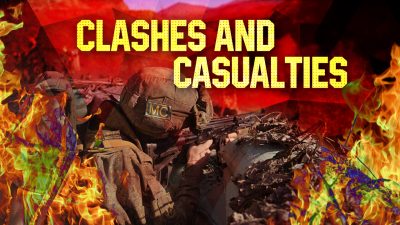Video: Clashes and Casualties Mark Nagorno-Karabakh War Anniversary

All Global Research articles can be read in 51 languages by activating the “Translate Website” drop down menu on the top banner of our home page (Desktop version).
To receive Global Research’s Daily Newsletter (selected articles), click here.
Visit and follow us on Instagram at @crg_globalresearch.
***
Baku has recently celebrated its victory in the Nagorno-Karabakh war, and escalations are beginning to pop up along the Azerbaijan-Armenia border.
November 17th was marked with a new ceasefire agreement between Armenian and Azerbaijani at their border, after Russia urged them to step back from confrontation following the deadliest clash since 2020.
On November 15th and 16th, the two sides accused each other of initiating fighting along their disputed border.
The Armenian defense ministry said its troops had come under fire from Azerbaijan and that 12 of its soldiers were captured, while two combat positions near the border with Azerbaijan were lost. At least one soldier died in the clashes on the Armenian side.
Baku claims the opposite – Azerbaijani forces had responded to large-scale “provocations” after Armenian forces shelled Azeri army positions, and that its own operation had been successful. Azerbaijan’s defense ministry claimed that “Armenian troops attacked Azerbaijani positions in the districts of Kelbajar and Lachin”.
According to the statement of Azerbaijani MoD, seven soldiers and officers were killed; ten others were wounded in the clashes. In response, anti-tank installations, military equipment and mortar belonging to the Armenian side were destroyed. Significant damage was also done to Armenian military personnel. The number of killed and wounded from the Armenian side is not reported
Baku’s Defense Ministry claimed that it had full control of the situation along the border areas and that was thanks to Azerbaijan’s operational and tactical superiority.
In a November 16th conversation with the President of the European Council Charles Michel, Azerbaijan’s president Ilham Aliyev said that Armenia had ‘repeatedly resorted to military provocations in the direction of Shusha, Lachin and Kalbajar’ and that ‘the latest large-scale Armenian attack took place today’.
Despite that, Armenian Prime Minister Nikol Pashinyan continues leading the country through Facebook and denounced Azerbaijan as the aggressor, claiming that discussions about ‘border disputes’ are ‘nonsense’.
The new round of violence in the Nagorno-Karabakh region began just days earlier. An Armenian civilian worker was unreasonably killed near a peacekeeper’s checkpoint in Shusha, according to Armenian sources. The incident took place on November 8th, the Day of Victory in Azerbaijan. The murder caused a response attack with an IED that targeted Azerbaijani military post in the same area on November 13th.
As a result, the only road connecting Armenia to Nagorno-Karabakh — the Lachin Corridor — was briefly closed.
Still, the aftermath of the war for Nagorno-Karabakh is still felt daily by the local populance. In addition to these sporadic clashes, the territory is still so heavily laced with mines and unexploded weaponry that it could take more than 10 years to be fully cleared.
A survey by Halo Trust found that 68% of inhabited settlements either had cluster munitions or evidence of their use.
As part of last year’s peace deal, Armenia handed over a number of mine locator maps. However, they are incomplete and are only about 25% accurate.
Armenia and Azerbaijan, two former Soviet republics, fought for six weeks from September last year over Nagorno-Karabakh in a conflict that killed more than 6,500 people, mostly soldiers. Ultimately, Armenia’s prime minister signed a ceasefire agreement that’s been widely regarded as a surrender.
*
Note to readers: Please click the share buttons above or below. Follow us on Instagram, @crg_globalresearch. Forward this article to your email lists. Crosspost on your blog site, internet forums. etc.
SUPPORT SOUTHFRONT:
PayPal: [email protected], http://southfront.org/donate/ or via: https://www.patreon.com/southfront

